The Mods and the Rockers
In which the social conflict between two new subcultures of the United Kingdom sent alarums throughout the land and threatened the very foundations which had established the Empire on Which the Sun Never Set with additional information about the post-War wages and cost of living for the Good Citizens of the British Isles.
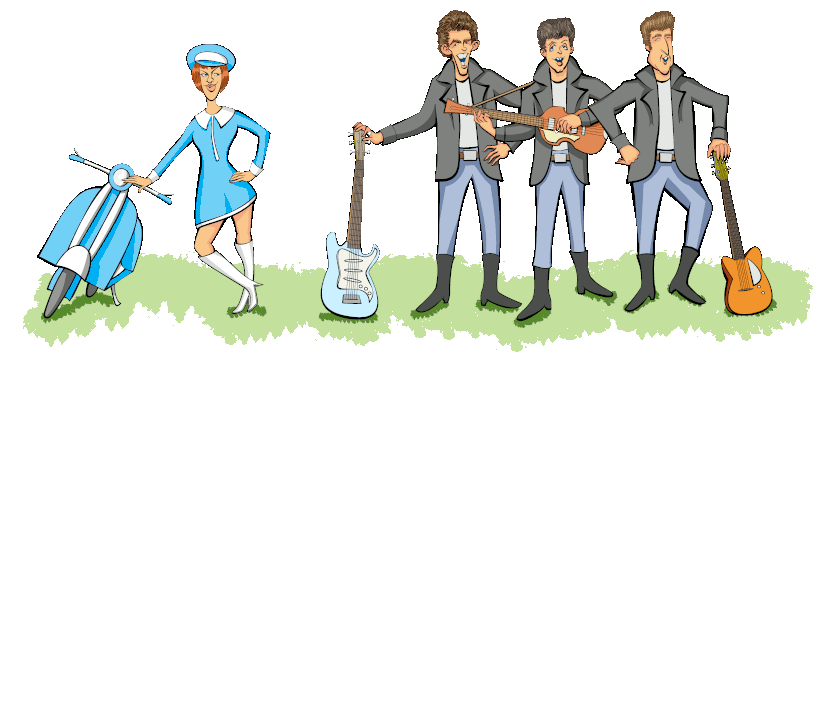
That said, beginning on March 28, 1964 - Easter weekend and extending to August - rioting broke out between two groups of young people in the seaside resort towns of England. The groups were made up of - as reported in the news - "British teenagers by the hundreds, restless, bored, and earning more money than they ever had before".
These - and we again quote - "hoodlums" had been - quote again - "terrorizing beach resorts like Margate and Brighton with savage, senseless fighting." Shops and property were damaged, and special police had to be airlifted from London. Photographs of helmeted Bobbies hauling away the "hooligans" hit the newspapers. Films of the riots were shown in the cinemas on the still-extant newsreels and even on that new-fangled means of communication, television.
The country was horrified. "It really has come to something" a commentator lamented, "when people can't take a short holiday without the threat of long-haired youngsters with knives indulging in an orgy of hooliganism." In Margate it was reported that more than 50 of these "hooligans" were arrested and individuals were fined over £600 apiece in today's currency or $1700 in US dollars. Some of the miscreants even ended up sentenced to Wormwood Scrubs.
It wasn't just Margate and Brighton that endured the invasion. Rioting broke out as far away as Whitson in Wales and along the south coast to Bournemouth with the violence reaching as far north as Clacton on the English Channel. Even historic Hastings wasn't spared "for what threatened to be the biggest ruckus since William the Conqueror landed there in 1066." The Pope himself denounced the rioters as "pitiful and vicious".
All right. Just who were these two groups of "hoodlums" and why were they causing the problems? We've always wanted to know that.
No doubt you have, as Captain Mephisto said to Sidney Brand. The answer is very simple really.
The groups that caused the "row" (as the British say1) were the Mods and the Rockers. A Rocker, we were told, wears a "nail studded leather jacket", "rides a powerful motorcycle", and spends most of his money on his bike, some on his girlfriend, and "a dutiful pittance on 'mum'".
In short, the Rockers with their jackets, denim blue jeans, and slicked-back "ducktail" pompadours wanted to be like Marlon Brando in the 1953 motion picture The Wild One. In keeping with those masculine dominated times, the definition of a Rocker was put in terms of the men. But the girls - "birds" in the 1960's British patois - also wore black leather jackets and jeans.
Rocker Preferred
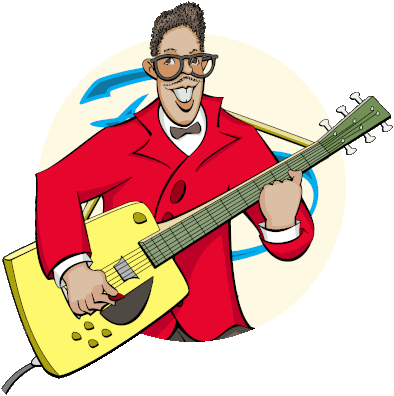
Bo Diddly
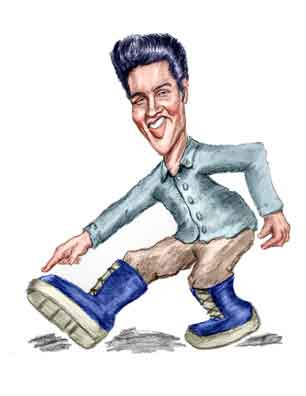
Elvis - Before
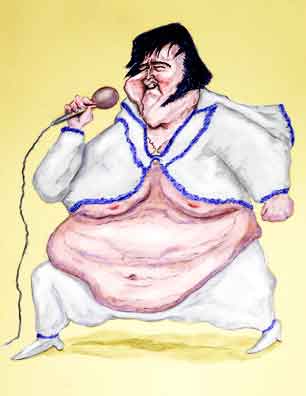
Elvis - After
It's natural to assume that the word "Rocker" comes from the group's preference for that horrible din imported from America called (bleah) rock-and-roll. Although the Rockers liked Elvis, they also went for the hard electric blues sound of Bo Diddley as well as the working-class tunes of Eddie Cochran ("Summertime Blues"). However, according to some of the original Rockers, the name is really derived from the rocker arms of their motorcycles, that is, the part of the engine that controls the intake of air and fuel and the flow through the exhaust valves.
Well, maybe. But whatever the source of the word, it's clear the forces that influenced the Rockers originated in
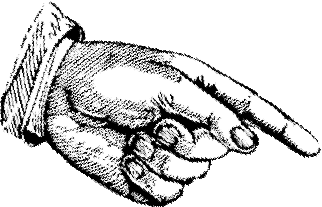

However, the Rockers' choice of motorcycles was necessarily of the home-grown English varieties like Nortons and Triumphs. And almost always it was the guys that drove the cycles and the "birds" rode behind hanging on to their "man".
OK. We know who the Rockers were. But just who were these Mods?
Here the etymology is certain. The word "Mod" was simply derived from "modern" or "modernist". A contemporary account described the Mods as young people who spent their extra money - which might be a munificent £1 a week - "trying to conform to sartorial [tailor-made] fashions which are apt to change almost hourly." The girls sported fancy shoes and calf-high boots and wore dresses with the incredible shrinking hemline. The chaps duffed up in "snazzy" suits complete with slacks and ties. Although many of their accoutrements were from the fanciest shops on the High Street, some Mods would design their own clothes and have them cut to order at the local tailors. Being vehemently opposed to the piled-high and waxed-up follicles of the Rockers, Mod men sported hair with a "dry" look and combed casually to one side.
Like the Rockers, the Mods also preferred two-wheeled transportation. But rather than blast around on cruisers or choppers, the Mods moved about on motor "scooters", that is, vehicles with small diameter wheels, a low power engine, and a design that allows the riders to sit with their feet to the front resting on a floorboard. The advantage of a scooter is the engine and drive mechanism were completely enclosed lest Modish clothes end up streaked with dirt or chain grease.
Unlike the Rockers whose motorcycles were of local manufacture, for the Mods it was Italian scooters that were de rigueur. Specifically the preference was for the Vespas and Lambrettas which could get more than 60 miles per gallon.
Driving a scooter left no doubt you were a Mod regardless of past or present styles. Bruce Welch was a guitarist for the English band The Shadows whose speciality was songs with smooth instrumental melodies like their 1960 hit Apache. Although by their coiffures and clothes the Shadows might be taken as Rockers, they lived in an apartment off Marylebone High Street - a most Modish area - and they got around on scooters. As Bruce told an interviewer in 2009, "[Guitarist] Hank [Marvin] had a Vespa and I had a Lambretta ... blue and white. And I had a white crash helmet. Looked like a right dick."
The Rockers, then, had their roots in the olden days of 1950's America. But the Mods were looking to a future that was emerging from Continental Europe, particularly from France and Italy. In fact some Mods preferred the word "Continental" to describe their modus Moderandi.
However, the inspiration from the Continent didn't mean the Mods were ignoring the coolest imports of American society. They would frequent the newly arrived Wimpy Bars where you could get hamburgers, hot dogs, and soft drinks. Equally popular were the establishments where you could even enjoy a slice of American style pizza.
Of course, you can't spend all your time eating American junk food and standing around looking Modish. So ten-pin bowling soon became a popular Friday night pastime. This was not only a properly American activity, but when the players made the approach and rolled the ball down the lane, they would step out in front of everyone and display their casual but stylish clothes. Oddly, the Mods, so conscious of Continental styles, were taken with the design and comfort of bowling shoes. After a game they sometimes would just nick them and (literally) walk out with them.
At this point, it's tempting to divide the Mods and Rockers along economic lines. That is, the Mods are obviously the rich kids living off their parents while Rockers came from the less affluent families and who left school for blue collar jobs. This division is not correct.
Both the Mods and the Rockers came largely from the urban working class. They may have differed in clothing and transportation, but not in social values or aspirations. Both groups were young people who found themselves living and wanting to enjoy the new era of post-Wartime prosperity. By the end of the 1950's, it wasn't just that new jobs were available. Unemployment - depictions in Andy Capp notwithstanding - was only 2-3% which is about a low as practicably possible.
But given how chintzy the wages of the time were, it's hard to believe that anyone had any money left over at the end of the week. True, since the end of the War the average wage had doubled - from a measley £5 a week to a munificent £10 by 1960. Of course, in those gender unequal times the men earned more than the ladies and the chaps could pull in £20 per week. The women, although working as hard as the men, might realize less than £10.
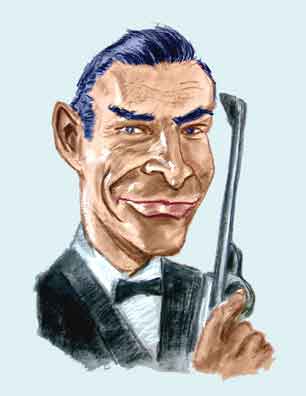
James Bond
Living on luxury at £2000 a year.
A surprisingly useful source for a glimpse of the economics of English lifestyles in the 1950's and early 60's are the James Bond novels of Ian Fleming. Since the books were published from 1953 to 1965, the occasional mention of earnings and expenses is at least an indication of the era's wages and the costs of goods and services.
In Thunderball, which is set in 1959, James Bond takes a taxi from a train station near the village of Washington in West Sussex to a nearby "naturopathic" health clinic called Shrublands. Bond's superior, Admiral Sir Miles Messervy (better known as "M"), had ordered Bond to take a two week rest cure at Shrublands because 007's intemperate lifestyle was raising havoc with his health.
As Bond climbed into the taxi he saw it was driven by a young man with "a duck-tailed haircut" who Bond sums up as "typical of the cheap self-assertiveness of young labour since the War". He figures the driver "despises his parents", "would like to be Tommy Steele", and "makes about twenty pounds a week".
So at the end of the 1950's, a young English taxi-driver would be earning about £1000 a year or nearly $3000. But only a few years earlier, Bond wasn't making a whole lot more. In Moonraker, set around 1954, we have a picture of a middle class UK wage earner. Bond, we learn, is a Principal Officer in the Civil Service and earns £1500 a year. He also has an independent tax-free revenue of £1000 - possibly from an inherited annuity or investments. His net income - income and national health tax deducted - was £2000 a year or $5600 in US currency.2
Footnote
We also learn what a high level government official hauls in about 1960. In On Her Majesty's Secret Service (published in 1962) we read that M makes £6500 per year. In US smackers that's $18,200 Translated for inflation we see M was earning around £150,000 to $180,000. This was certainly very good pay but not in the elite range. When Bond was risking more than his yearly salary in a high stakes bridge game, he realized that if he lost would have to borrow from M. And M, he muses, "wasn't a particularly rich man".
Bond, we learn, could live "very well" on that amount. He was able to purchase a supercharged 1930 4½-liter Bentley automobile (which he bought after it had been wrecked) and lived in a luxurious two bedroom flat (apartment) in a former Regency House in Chelsea. He could even afford a full time housekeeper, an elderly Scottish woman named May, who cooked his meals, cleaned the flat, and "clucked and tut-tutted" if "Mr. James" had a hangover.
When not on assignment, Bond lived a bachelor's existence with "elastic" working hours of 10 to 6. At night he spent his time either gambling at cards with his friends (he once lost £100 in a private game) or at Crockford's, a real (but now closed) "gentlemen's club" of which he was a member. Bond was also a weekend golfer and played "high stakes" games, which would be on the order of a £10 Nassau (£10 a side and £10 on the match). His handicap was a "real nine" at courses like Huntercombe and Sunningdale. Of course, being James Bond, he also spent some nights sportin' with the ladies.
It was on his assignments that Bond could really live the life of the jet-set since his expense account permits him to spend as much as he likes. Even during the immediate post-War years, he was able to indulge in high stakes baccarat, roulette, or blackjack between his luxurious lobster and champagne dinners at places like Monte Carlo, Las Vegas, or Royale-les-Eaux, a town that doesn't exist.
We have to wonder how much May earned, particularly since her wages had to come out of Bond's £2000 net income. In 1960 the average wage for a woman working in England was £7 (an entry level policewoman made about £6). As a housekeeper May surely made less.
In the last novel that Ian wrote, The Man With the Golden Gun (set in early 1963), we learn that when Bond went missing on his previous mission to Japan (described in You Only Live Twice), May was still living in the apartment and paying the upkeep with her savings. So we can deduce she had been originally hired as a live-in housekeeper. Since May did not have to explicitly pay for her own room and board, her salary would have been adjusted downwards. All things considered, it's unlikely that May was making more than £4 per week in actual salary - maybe even £3.
We see that even when everything is corrected for inflation, salaries in the UK seemed impossibly low just to buy the basics. After all, a £2000 yearly income in the 50's and 60's translates to about £35,000 today. So how could James Bond afford a Bentley, and the Mods and Rockers buy their Lambrettas and Nortons?
The answer, of course, is simply Keynesian economics and the wage-to-inflation lag. The price rises of the 1950's and early 60's were much lower than in the following two decades, particularly the Inflationary 70's. And so the cost of living was less. In 1958 a typical English family - parents and at least two kids - could easily manage on £1 for a week's groceries. This included meat, fish, cheese, eggs, butter, sugar, vegetables, tea, and the occasional bottle of bitter.
Rent and even mortgages were also around £1 a week. And cheap stay-at-home entertainment was growing. Radio had been around since the 1920's, but now there was the telly. If you didn't want to spend the £80 to buy one - a lot of money - you could rent a set at less than 4 shillings a week.
Taxes were also designed to help the working class and not, as today, to be eliminated for the rich. Although nominally the income tax could be near 50%, there were generous tax credits for a family with children. So a male worker making £20 a week and whose wife stayed at home and looked after the kids might pay no more than £20 a year in income tax. That's a rate of 2%.
For young people living on their own and away from Da and Mum, the later 50's and early 60's was a consumer's paradise. Once the kids were out of school - often at age 15 - they easily found jobs and might work for higher wages than their parents. So there was no problem coming up with a pound a week for new clothes and a couple of pounds a month on payments for a scooter or motorcycle (about £200 total). Being a Mod or Rocker was well within the means of pretty much anyone.
OK. The Mods and Rockers wore certain types of clothes and got around on motorcycles and scooters. They had enough money to go out on weekends and hang around with their friends. So what, we ask, was the problem?
Now it is pretty easy to understand the angst generated by the Rockers. Roaring around on motorcycles, wearing black leather jackets, and gathering in gangs around the town, they were deliberately cultivating the "juvenile delinquent" look from the movies like The Wild One, The Blackboard Jungle, and Rebel Without a Cause. Older adults saw the Rockers as dangerous motorcycle thugs who got into "rumbles" and might take over a town. Worse, the Rockers were against the mores that pulled the country through the Great Depression, the War, and the early 1950's years of austerity. And without the Traditional 
 values, England would not survive.
values, England would not survive.
Parental objection to the Mods, though, is a bit more difficult to fathom. After all, what's wrong with their sons wearing suits, ties, and slacks and their daughters buying stylish dresses? Motor scooters were a sensible alternative to the still scarce automobiles, particularly since a gallon of "petrol" had skyrocketed to 4s/6d (or four shillings and six pence for those needing translation). That would be 63¢ in 
 where "gas" had spiraled to an outrageous 30¢ per gallon).
where "gas" had spiraled to an outrageous 30¢ per gallon).
Simply stated the Mods were always putting on the style and that grated on their parents' nerves. When, the old folks asked, were the kids going to start wearing "real clothes". And why a scooter? A bus ticket to and from downtown could be as low as 1d. Shoot, you could travel by train from London to Brighton for 15 shillings, for crying out loud!
Still, if all the kids were doing was buying clothes their parents didn't like and getting about on two-wheeled gas efficient vehicles, how did they end up rioting on the beaches of England?
Well, unfortunately everyone lives in the real world, and life in the cities of the 1950's and 60's had its darker side. Use of "recreational" drugs was becoming more widespread and the Mods had embraced the use of amphetamines (also popular with the beatniks) where with a few pills they could go to the clubs and dance all night. The Rockers sometimes disparaged the Mods as "junkies" although they would sometimes resort to using "reefers".
To compound the problems there were "bad" areas of London and other cities where you never ventured and where violence could erupt for no apparent reason. And yes, sometimes the trouble was from young people. In 1955 when The Blackboard Jungle was first shown in London, kids in the audience began tossing chairs about and dancing in the aisles.
Oh, yes, there's one thing. These rioters were neither Mods nor Rockers.
Instead, the "hooligans" were young people who had taken to dressing up in clothes of - get this - the Edwardian Era. Yes, that's right, the time in England from 1901 to 1910 when the King was Victoria's rather easy going and pleasure loving son, Edward VII. Because of the kids' Emulation of Edward (or at least his duds), the news reporters dubbed this bunch the "Teddy boys".
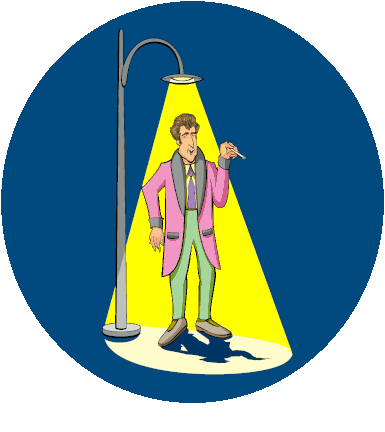
Teddy Boy
(Click on Image to Zoom In and Out.)
OK. So now we have another question to ask. Just where the heck did the Teddy boys come from?
Although by 1960 Prime Minister Harold MacMillan was telling the British people that they never had it so good, the first years of the 1950's were tough. Wartime rationing was continuing and goods were scarce. As the Teddy boys were largely from the lower economic classes, they didn't have much to do other than hanging about their neighborhoods.
With the tight economics and limited mobility, it was natural that a gang mentality solidified. A Teddy boy wandering into another area could end up getting pounded into the pavement. Nor was the violence just Teddy-on-Teddy. In 1958 and resentful of immigration from other areas of the British Empire (which had actually been encouraged by the government and benefited the country), the Teddy boys instigated race riots that were centered around London's Notting Hill district.
Unlike other counterculture groups of the 20th century - the hipsters, beatniks, or the hippies - the Teddy boys are almost always depicted in a negative light. Even today definitions still run like:
Ted'-dy boy', (often l.[ower] c.[ase]) Informal. a rebellious British Youth who in the 1950's and early 1960's affected the dress of the reign of Edward VII
Another dictionary is a bit more blunt:
teddy boy noun [Teddy, nickname for Edward] (1954): a young British hoodlum affecting Edwardian dress
The comment on Edwardian apparel needs a bit of qualification, though. If you see pictures of the rather hefty son of Queen Victoria, you'll see scant resemblance in his rather conservative attire and coiffure (what there was of it) with that of the Teddy boys.
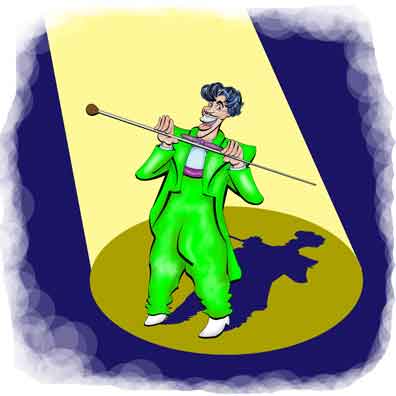
Cab Calloway
(Click on Image to Zoom In and Out.)
Instead, the Teddy's apparel was more reminiscent to that of the zoot-suited (but non-violent) hipster Cab Calloway. The Teddy look demanded a flashy long dress jacket, often a tie, fancy slacks, and stylish shoes. The hair, though, was in the greased-back duck-tail piled-high pompadour. So in the Teddy boys we see the harbinger of both the Mods and the Rockers. As the new groups emerged, the Teddy boys declined but didn't entirely disappear. They continued in their identity well into the 1960's.
In some ways, then, we see that the beach riots of the Mods and Rockers were nothing more (and nothing less) than the expansion of localized urban tensions. Gas rationing had finally ended in 1954, and with the return of prosperity everyone - Mods, Rockers, and Teddys - became more mobile. As they ventured further afield, it didn't take much to fan the embers outside their home neighborhoods. A sneer from one group, a jibe from another, and the hackles would rise.
By the late 1950's, family holidays at the seaside had become common. Da and Mum lolled about on the beach and the kids could dip in the water and play in the sand. Unlike the Good Old USA where a trip to the seaside can involve a sojourn of a thousand miles, in an island country the size of Minnesota it's a rare town where the beach is more than 50 miles away. So on Easter weekend in 1964, the people of England - including the Mods and the Rockers - headed for the seashore.
Most people likely assume that the motorcycle gangs of the Rockers would be the instigators of the troubles. However, this - as Sportin' Life said - ain't necessarily so. By the 1960's, the black clad motorcyclist "rebel" was becoming a thing of the past. The numbers of the Rockers were dwindling and when the groups descended on the beaches, one estimate was the Mods outnumbered the Rockers 10:1. Witnesses testified to large groups of Mods chasing down and pummeling the less numerous Rockers.
Then suddenly it was over. The riots between the Mods and the Rockers vanished and the conflict even became a topic for humor and ridicule. In 1965, David Frost, then primarily a comedian, produced a satirical film showing the battle of the two groups being a D-Day type invasion. By the end of the 60's, the Mods and Rockers were scarcely mentioned. Eventually they grew up, got married, had kids, and became stodgy, old-fashioned parents.
Well, that's pretty much the story of the Mods and the Rockers. There's only one question remaining.
Did any of it really happen?
To put it another way, could the stories of the riots have been cooked up by the - quote - "Establishment" - quote - to disparage the newly emerging counterculture? Is it even possible that the whole Mod vs. Rocker "terror" was a nothing more than a fantasy staged by a sensation seeking news media?
Certainly some of the Mods and Rockers claimed that on the infamous weekends reporters would see the kids wandering around the beach minding their own business. Then the news chaps would slip them a five or a tenner to start tossing around some beach chairs. They would even pay the kids to stage fake fights and chases - all the better to catch on camera and sell papers with.
As for claims that the groups terrorized the inhabitants, one Rocker said that was bullshine, balderdash, and poppycock. In fact, if they saw an elderly lady having trouble crossing the street, the Rockers would go help her along. Baden-Powell move over!
Even the kids who admitted that there was some trouble insisted it wasn't much more than a few insults traded and a few isolated clashes. The "extensive property damage" at a resort might run something like £500 - no more than was incurred on any other bank holiday weekend. But they denied there were riots, a statement corroborated by one of the police officers who was there.
It's certainly easy to dismiss the reports of the Mods vs. the Rockers battling along the coast as examples of how tabloid journalism can be practiced even by - quote - "respectable publications" - unquote. The alarmist language used in the mainstream press referred to "riots" of "disastrous proportions" and made it seem as if the British Empire was about to fall due to the actions of a few rowdy teenagers.
Of course by now we've tossed out the word "riot" around like it's paprika on marhapörkölts. But no one has explained what it takes to make a riot. Surely that should be simple enough.
Weeeehhhhheeeeeellll, what turns a scuffle into a riot is a bit more iffy than you might think. In fact, it depends on where you live.
In Great Britain, "riot" is defined "where 12 or more persons who are present together use or threaten unlawful violence for a common purpose and the conduct of them (taken together) is such as would cause a person of reasonable firmness present at the scene to fear for his personal safety." That seems simple enough. But what makes the definition hazy is that in the United States, it only takes three [3] people to make a riot.
So in Britain, it may well be that the Mods and Rockers weren't rioting at all. But if you were an American, they were.
But hold on there, pilgrims. Real or staged, riots or not, why were the stories of major mayhem so believable?
Well, here's where the professors step in. Sociologists have noted that the horror about the Mods and the Rockers is an example of what is called a "moral panic". Moral panics arise when an established mainstream portion of the population sees the actions of a minority group as a catastrophic threat to the society. However, the perceived threat is inevitably overblown and in future years the actions and the group that caused the panic end up becoming absorbed into the country's accepted culture.
A little mature reflection will reveal that there is hardly a time where there isn't some kind of moral panic or another. Ancient Athens saw the teachings of Socrates was creating a group of rich young lagabouts whose anti-democratic ideas brought about the fall of Athens and the murderous rule of the Thirty Tyrants. Of course, that Athens lost the Peloponnesian War which had been declared by the mainstream politicians didn't help.
Then there was another moral panic in Rome around 64 AD. That was when the Roman citizens noticed there were this new group of nutballs practicing a new "mischievous superstition" (as Tacitus called it). They were turning the citizens away from the traditional Roman values like sacrificing animals which not only appeased the Roman gods but also produced a lucrative market of meat. The good Romans saw these Christiani (as Pliny the Younger somewhat disparagingly called them) as the cause of a series of disasters that started with the Great Fire of Rome and continued as the Barbarians - some of them Christian - began taking over the land.
And in the Roman Empire there was another moral panic after 331. That was when the pagans were trying to oust the Christians who had indeed taken over the Empire. The new moral panic faded pretty quick when the Emperor Julian who had been pushing for the pagans died after a couple of years on the throne.
Moral panics have continued throughout history. They have been identified in the 17th and 18th and 19th centuries. But it was the panics in the 20th century that have been given most attention by the social scientists.
In the 1920's the flappers with their short skirts, cigarettes, and lounge lizard boyfriends were blamed for the worst side of the Roaring Twenties which led to the drinking of bootleg liquor and the rise of organized crime. Of course, the passage of the 19th Amendment and enactment of the Volstead Act by duly elected officials had something to do with the problems as well.
It was in the 1950's that moral panics really hit their stride. There was the Civil Rights movement which was trying to (horrors!) make sure that all American citizens had equal rights. There was the Red Scare which pointed out that the country had "enemies within" who were conspiring with the Russians to hand over America to the Commies. These suspected "fellow travelers" included the likes of Harry Belafonte (popular singer and civil rights activists), Orson Bean (comedian and panelist on celebrity quiz programs), Lena Horne (great singer and all around lady), Arthur Miller (playwright and author of The Crucible and once the husband of Marylin Monroe), Charles Chaplin (master comic of the silent era), Oscar Brand (friend of Pete Seeger and whose album Presidential Campaign Songs is a classic), Aaron Copland (American composer of "Fanfare for the Common Man", "Appalachian Spring", "Rodeo", and "Billy the Kid"), Eddie Albert (who later starred with Eva Gabor on Green Acres), Ossie Davis (famous actor who appeared in many movies including Bubba-Ho-Tep and Nat Turner: A Troublesome Property), Martin Gabel (Tony Award winning stage actor and husband of Arlene Francis), Zero Mostel (creator of the role of Tevye in Fiddler on the Roof and who played Max Bialystock in The Producers with Gene Wilder), Josh White (master bluesman whose "The House I Live In" sounds amazingly patriotic), Will Geer (who played the grandfather on The Waltons), Ruby Dee (star with Sidney Poitier in Raisin in the Sun), Artie Shaw (often married Big Band leader), and Leonard Bernstein (yes, even Lenny).
A lot of moral panics focus on young people. There was the rise of the comic books and their "seduction of the innocent" where parents decided that if kids wanted to relax after school they shouldn't read short publications featuring Disney or Warner Brothers characters, superheroes, or millionaire socialites who with their young "ward" fight crime while running around in masks, capes, and leotards. Instead the kids should read massive densely worded books by Charles Dickens, Victor Hugo, and Herman Melville with their incomprehensible dialog and descriptions which wander off-topic page after page.
But, of course, it was rock and roll that was the big bête noire. By 1955, this new music (if it could be so dignified) was seen as destroying the very fabric of 
 . Music teachers - some who loved unlistenable bebop and progressive jazz - thunderously denounced rock and roll and trashed their students who listened to it.
. Music teachers - some who loved unlistenable bebop and progressive jazz - thunderously denounced rock and roll and trashed their students who listened to it.
Towns went so far as to ban rock and roll concerts altogether. As late as the 1970's the governor of a Quaint American State even called out the National Guard to prevent the holding of a rock concert in a state park. Although the park was miles from any city, he claimed the "loud offensive music" would disturb the tranquility and the large number of people congregating in such a small area would present as danger to public order. The kids then asked why he didn't ban the scheduled upcoming college football games.
Of course, nowadays rock music is considered high art with rock musicians writing operas, oratorios, and symphonies. They have received major cultural awards alongside Nobel prize winning novelists, playwrights, conductors, and Shakespearean actors. If you hear music playing, it's likely to be rock.
Well, now we know about the moral panics. This leaves just one more question.
Are moral panics real?
The "moral panic" sociological model has been subject to a lot of criticism. The terms themselves - "moral" and "panic" - are really too vague to have any analytical value. The entire concept can be criticized as being inseparable from personal bias. After all, a moral panic is "the other guy's" phobias. It's their worries that are overblown and inconsequential. On the other hand professors of sociology who have concerns about newly emerging groups they see as threatening the fabric of society will consider themselves both rational and reasonable.
In any case, there is no real way to identify a fear as a hyped up moral panic or a real threat except to wait around a few decades. What is dismissed as a inconsequential moral panic can become a catastrophic event. After all, the bumbling attempts by Maria Shicklegruber's grandson and some of his buddies to meet in a beer hall in 1923 and then take over the Munich government made it easy to dismiss them as bunch of idiotic thugs led by a carpet chewing mouth-foaming nutball. Revolution? Huh! It only lasted a day and then faded away. News stories reported that people in Bavaria were more worried about the price of beer than the "beer cellar" revolt. Twenty years later the dismissive opinion had been modified considerably.
And not everyone dismissed the fracases between the Mods and Rockers as mythologizing - not even the Mods and the Rockers. Even if much of the violence on the beaches was overblown, it was enough so that some Mods began distancing themselves from the group. When asked by reporters what group they belonged to, they would refer to themselves as "former Mods". In one motion picture a reporter asks a Modish character if he was a Mod or a Rocker. "Um, no," he replied. "I'm a Mocker."
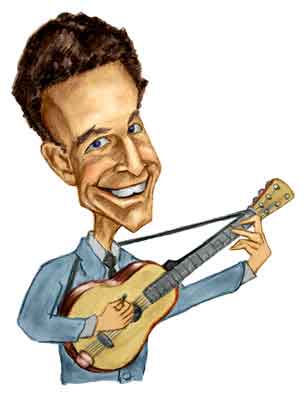
Lonnie Donnegan
Motorcycle clubs are still around and sometimes even the tranquil ones look like the Rockers. The Mods soon adopted to new styles and assumed names of other "cool" groups that emerged in ensuing decades. One of the most famous Mod transitory groups were the Yuppies of the 1980's. They finally morphed to the various "Generation-[Fill in the Letter]" of the New Millennium. But if you want, you can still find traditional Mod fashions in the stores.
In any case, the distinctions between Teddy's and the Mods and the Rockers was never so tight that members couldn't slip back and forth. In the later 1950's there was a band in Liverpool called the Quarrymen - somewhat misnamed since the ages ranged from 14 to 17. They started off playing a type of music called skiffle which was a proto-rock and roll that originated in England and was heavily influenced by American folk songs. Lonnie Donnegan was the premiere skiffleman and his somewhat manic songs ranged from "Rock Island Line" to "My Old Man's a Dustman".3
Footnote
And of course the classic "Does Your Chewing Gum Lose Its Flavor on the Bedposts Overnight".
At first the Quarrymen took on the Teddy boy personae with slicked back hair and they dressed in ties and coats (they also wore trousers, of course). But by the time they reached their majorities and began playing at the Cavern Club in Liverpool, they had switched to black leather jackets and blue jeans. So they were definitely affined to the Rockers even after the group changed their name (can't remember what it was).
But then a record store executive saw them perform. He was impressed by their sound and decided to become their manager.
Brian - that was the gentleman's name - insisted the Rocker look be abandoned and the Liverpudlian lads put on Modish suits and ties. After some reluctance the group agreed, particularly since they could now play in better venues and at higher fees. So the Teddys became the Rockers became the Mods and later did all right in mainstream entertainment.
References and Further Reading
"Mods & Rockers Clash at Margate", British Pathé, (1964)
"Mods, Rockers, and Bank Holiday Mayhem", BBC, 2014.
"News Fronts: Those Mods and Rockers, ''astings 'Aint 'Ad It So Bad Since 1066'", Life Magazine, September 18, 1964, pp. 61-62, 64.
Still Fresh as a Daisy: Mary Quant's Era-Defining Fashion", Kate Kellaway, The Guardian, March 17, 2019.
"Mods v Rockers: Two Tribes Go to War", Jon Savage, BBC, October 21, 2014."
"Margate Capitalises on 1964 Mods and Rockers' Riots", Clark Ainsworth, BBC, October 1, 2011.
"Mods and Rockers 50 Years on Since Clacton 'Invasion'", Laurence Cawley, BBC, April 20, 2014.
Folk Devils and Moral Panics: The Creation of the Mods and Rockers, Stanley Cohen, Basil Blackwell, Ltd., 1972, 1980.
Mods, Rockers, and the Music of the British Invasion, James Perone, ABC-CLIO, 2009.
"Mods v. Rockers: Britain's Summer of Discontent", Peter Dunn, The Observer, May 19, 2012.
Mods v. Rockers! The Beach Battles That Rocked Britain in 1964 - and Terrified Bank Holiday Tourists", Rod McPhee, Mirror, April 20, 2014.
"Forty Years Ago Pictures of Mods and Rockers Shocked Polite Society. But Were They Staged by the Press?", Robin Stummer, Independent, April 4, 2004.
"Lambretta Versus Vespa: The Two Italian Scooter Tribes That Took Over the World", Matt Barker, The New European, July 18, 2017.
"The Real 'Quadrophenia': Mods Vs. Rockers Fight on the Beaches", Paul Gallagher, Dangerous Minds.
"I Predict A Riot: Panorama on Mods and Rockers", Eamonn Walsh, BBC, May 1, 2009.
"50th Anniversary of Mods vs. Rockers Riot", Motorbike Writer, May 12, 2014.
"1964: Mods and Rockers Jailed After Seaside Riots, On This Day - May 18, BBC.
"'I Was There': Mods and Rockers, 1964", BBC Radio 5.
"Oh for the 1960s! People Earned Less But Could Afford More", Patrick Collinson, The Guardian, December 10, 2016.
"British Youth Culture", Study Smarter.
"What Bikes Did Mods And Rockers Ride?", Retro Galaxy.
"Claire Sheridan Defends American Arts and Letter", The Cordova Daily Times, July 28, 1922, Page 6.
"Innocenti Lambretta 150LD - 1958", Lane Motor Museum.
"Spokane Men Ready to Probe Flappers", The Seattle Star, April 11, 1922, Page 5.
"What's the World Coming To?", The Carbon County News, April 5, 1928, Page 7.
"The Daily Star's Pictorial Page", [Washington, D. C.] Evening Star, December 3, 1923, p. 13.
"Beer Drinking Champs Of Germany Protest Price Raise on 'Suds'", Douglas [Arizona] Daily Dispatch, Section 2, p. 4, February 20, 1927.
Random House Compact Unabridged Dictionary, Random House, 1996.
Merriam Webster's Collegiate Dictionary, Deluxe Edition, Merriam Webster, Inc., 1998.
"Flappers, Cigarettes and Cocktail Drinking, Stamped As Younger Set's Perils", The Bridgeport Times and Evening Tarmer, September 20, 1922, p. 1
"Moral Panics", Chas Critcher, Oxford Research Encyclopedia of Criminology, March 29, 2017.
"How Much Did Things Cost in the 1950's?", Retrowow.
Domestic Food Consumption and Expenditures: Annual Report of the National Food Survey Committee, Her Majesty's Stationary Office, 1960.
"What a Working-Class Family Spent Its Money on in Mid-20th Century UK", 1900s.org.uk.
"A Guide to London Gangs, Past and Present", Alex Coles, Discover Walks, October 24, 2019
"25 Rocking Images Of 1950s Britain’s ‘Feral Youth’, The Teddy Boys", Erin Kelly (author), Leah Silverman (editor), All That's Interesting, March 31, 2019, Update: November 4, 2021.
Casino Royale, Ian Fleming, Jonathan Cape, 1953.
Moonraker, Ian Fleming, Jonathan Cape, 1955.
On Her Majesty's Secret Service, Ian Fleming, Jonathan Cape, 1963.
"Supersizers Go: The Fifties", Sue Perkins and Giles Coren (presenters), BBC, 2009.
"Never Heard of Skiffle? You'll Want To After 'Roots, Radicals and Rockers'", Chris Klimek, Dallas Morning News, July 11, 2017.
"Skiffle: The Most Influential Music You’ve Never Heard", Brady O’Callahan, The Indypendent [sic], September 1, 2017.
A Hard Day's Night, John Lennon (actor), Paul McCartney (actor), George Harrison (actor), Ringo Starr [Richard Starkey] (actor), Norman Rossington (actor), Wilfrid Brambell (actor), Richard Lester (director), Alun Owen (script), George Martin (music director), Walter Shenson (producer), United Artists, 1964.